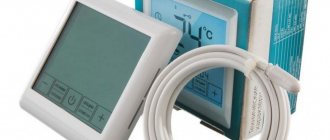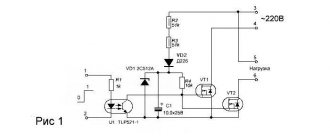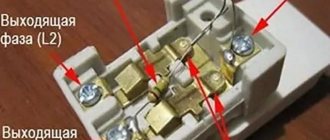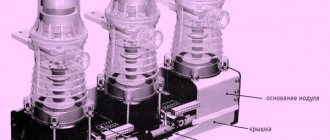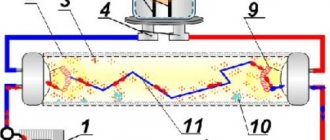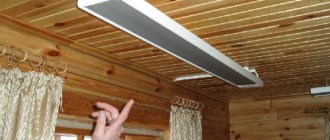The fundamental difference between infrared heaters and convective-type structures is the heating principle. If convective heaters operate on the principle of pumping heated air, lifting it to the ceiling and circulating it throughout the room until the temperatures in the ceiling and floor areas are equalized. These heating devices are characterized by increased energy consumption to heat the room and create dry air, which affects the deterioration of the physical condition of the inhabitants.
The characteristic of infrared waves is their long wavelength, which is perceived by the human body only as a sensation of heat, since the light itself lies beyond the range of discrimination of the human eye. The principle of operation of infrared heaters (IHR) is to heat not the air in the room (8%), but the objects in it (92%). The rays produced by PPI pass through the air without particularly affecting its heating. When infrared heaters operate, heat flows are felt from the moment it is turned on, but do not cover the entire area, but are localized at the point of radiation.
The operating principle of infrared heaters is based on the use of three types of electromagnetic waves:
- The first type of waves represents short-range waves with a wavelength from 0.77 to 15 microns, which pose a risk of burns if they are close.
- Waves of the middle range of lengths, located in the range from 15 to 100 microns.
- The latter type is represented by long range waves from 100 to 340 microns, creating a soft heating effect when passing through light-transmitting materials of interior elements.
However, when encountering objects that do not transmit rays, they are absorbed and the surface of the object is simultaneously heated. This is a primary heating mechanism that is faster compared to convective heaters. Secondary heating occurs when heated objects and interior parts (ceiling, walls, floor) are released to the surrounding air.
Infrared heaters are classified according to their temperature range:
- High-temperature type , having a short emitted wavelength and providing heating up to 400°C. Devices of this type can cause dangerous damage to human skin if they are near a heating source. Based on this, devices of this type are mounted in wide, spacious rooms on the ceiling at a height from the floor surface of at least 3 m.
- Low-temperature type , with a heating temperature of the heating element spiral up to 50°C.
The design of the simplest infrared heater consists of a metal body with paint applied to the surface. A reflective element made of aluminum is installed in the housing, on which, in turn, the main structural part of the infrared heater is mounted - the heating element (HE). Additionally, the IKO includes a thermostat that allows you to regulate the heating temperature. There are 4 types of NE:
- halogen;
- carbon;
- ceramic;
- tubular.
At home, it is preferable to use carbon or tubular NEs, since the ceramic type is characterized by fragility, and halogen-type elements are characterized by short-wave radiation, which has a negative effect on the human body.
Introduction
If a conventional battery or convector heats a room by transferring heat to the air, then infrared devices heat the surface. They work in exactly the same way as sunlight, which passes freely through the air, but heats objects (dark ones much more than light ones). This radiation has a long wavelength, so we do not see it, but we feel it with our skin, understanding where the heat source is.
Classic portable infrared heater
What are the benefits of IR heaters? The fact that a conventional battery heats the air, as a result of which the convection process starts in the room. In order for the room to warm up, the convector needs to heat the air, it rises up, warms the ceiling, and then slowly fills the entire room. The temperature difference in a classically heated room (standard height 2.6 meters) between the ceiling and floor can be about 5-7 degrees. Since we are located downstairs in the middle of the room, we have to wait quite a long time for the room to warm up.
That's not how IR heaters work. They warm up objects in front of them. You will feel warm immediately after switching on, although the room temperature will be low. Gradually, the air in it will warm up due to heat transfer from warm objects.
Pros and cons of infrared heaters
IR heaters have their advantages and disadvantages. This must be taken into account when choosing a heating system.
The advantages include:
- direct heating of the necessary elements without the need to heat the air in the room. This is the main advantage of infrared heaters due to this operating principle;
- Infrared radiation has a healing effect on humans. Residents of a house heated by this method feel pleasantly warm and blood circulation in the skin improves. Radiation can relieve joint or muscle pain, improve the functioning of the musculoskeletal system, strengthen the immune system;
- speed of operation - a feeling of warmth comes immediately after turning on the device;
- lack of convection air movement, this is especially important for allergy sufferers;
- ability to effectively use equipment outdoors;
- saving on space heating;
- long service life;
- environmental friendliness - the emitters do not have harmful impurities, consist mainly of glass and ceramics, and are safe for health.
The disadvantages are:
- high energy consumption, this is typical for all electric heaters;
- heaters are safe for health; if you stay close to the emitter for a long time, burning and redness of the skin may occur;
- in particular cases when heating the air in the room is required, infrared devices will not help;
- bright light - devices with tubular heating elements have a fairly bright glow, this is a significant disadvantage at night in the bedroom;
- fire hazard if used improperly (applies to high-temperature models);
- rapid cooling of objects and rooms when the radiator is turned off.
Many of the disadvantages apply only to a certain type of high-temperature infrared heaters and are completely absent from others. Compared to the pros, the cons are not so significant, and after weighing all the pros and cons, they can be neglected or minimized.
Device and principle of operation
An IR heater is very similar to a fluorescent lamp without a top diffuser. It consists of a metal body, a reflector, a thermostat for power control and a heating element. Tens can be:
- Tubular.
- Carbon ones.
- Ceramic.
- Halogen.
Note:
Devices are divided according to the installation location into floor-mounted and wall-mounted (ceiling-mounted). Buy floor heaters with a tip-over sensor - if they fall, they turn off, which helps avoid fires.
Design and operating principle
Structurally, an infrared gas heater includes a metal casing in which gas distribution equipment, automatic protective devices and a heat emitter are assembled. The principle of its operation is similar to a gas burner, but unlike conventional burners, there is no classical gas combustion here.
Rice. 2: operating principle of IR gas heater
Look at the picture, it shows the principle of operation of an infrared gas heater. When gas is supplied, it enters the diffuser, where it is picked up by a stream of air and directed into the mixing chamber, where a combustible mixture is formed. After this, the gas mixture enters the perforated porous structure of the ceramic plate. After a spark is supplied from the piezoelectric element, the mixture in the holes ignites and transfers thermal energy to the ceramic element.
Next, the heated ceramic plate heats up to a temperature of 900ºC and begins to emit waves in the infrared range. The ceramic emitter itself does not transfer heat to the surrounding space, like a convector, but directs the flow of infrared radiation into the heating zone. Such a zone is strictly limited in its geometric parameters, and the gas heater has a directional effect. All objects and people falling within the range of infrared radiation will be heated by the flow.
Selecting a device
Now that you understand the working principle of an infrared heater,
Let's look at the selection rules. The first step is to decide in which room it will be used and what is actually required of it.
If the device will be used for spot heating of your workplace and resting place, then it is better to purchase a classic floor-mounted version. You can easily move it around your home, including in the right places.
If you need to heat a specific place (for example, a bed or an entire room), then it is better to use ceiling devices. They take up minimal space, fit well into the interior, and can even be mounted on a suspended ceiling.
Note:
For effective cooling, the device needs free space around the perimeter. When installing the heater in tension fabrics, leave a gap of 5-6 centimeters between it and the ceiling.
The main advantage of ceiling devices is a large angle of wave dispersion and correct focusing. They heat horizontal objects (floor, furniture) that have the maximum area, so the room quickly becomes warm. Floor and wall devices focus on vertical objects, while “catching” waves on the floor and ceiling. Heating the ceiling is generally pointless, and the floor does not receive the same dose of heat as from downward reflectors. In portable models, you can adjust the angle of the emitter, which somewhat improves the process, but you still won’t be able to achieve the same efficiency as ceiling, mobile and wall-mounted models.
Classification
It should be noted that not all gas heaters operate according to the above principle. Depending on the method of obtaining thermal energy from blue fuel, gas heaters are divided into three main classes:
- Gas convectors - have a burner design and operate on the principle of a gas gun. When fuel burns, thermal energy is generated, which is directed by a fan into the desired area. The disadvantage is the presence of an open flame and relatively large losses.
- Catalytic heaters - their distinctive feature is the presence of a catalytic panel that converts fuel into thermal energy through its oxidation. In such devices there is no combustion process, so they are the safest and most environmentally friendly heat sources. But their main disadvantage is the relatively high cost of the panel itself. Therefore, heaters operating on the principle of catalytic combustion are purchased relatively rarely.
- Infrared heaters emit directed IR radiation from a ceramic burner. Unlike the previous type, they still require gas combustion, but are capable of generating greater thermal power and are characterized by a significantly larger heating area.
3: design of an infrared gas heater Comparing the above types of gas heaters, it can be noted that catalytic and infrared have significant advantages over a classic heating device. Of these two, catalytic ones are preferable for rooms with a square area of up to 20 m2. Over 20 m2, infrared heaters have an indisputable advantage, so they can be used not only as a room heating system, but also as outdoor heaters.
The classification of infrared gas heaters can be divided according to several criteria. So, all devices can be conditionally divided into two main groups: autonomous and operating from main gas pipelines. The first of them require the installation of a gas cylinder, which recharges the heater; they can be taken with you outdoors to heat tents. The latter must be powered from a central gas pipeline and cannot move from place to place, to new facilities without connecting the gas supply system to this point.
By type of placement, infrared gas heaters are divided into:
- Floor-standing – which are installed on horizontal surfaces using a special stand or using structural elements;
Rice. 4: floor standing IR gas heater - Ceiling – suspended from the ceiling directly above the area that needs to be heated, such models allow you to save space in rooms with a small square footage, since they themselves do not occupy useful space;
Rice. 5: Ceiling IR gas heater - Wall -mounted ones are identical to previous gas heaters with the difference that the infrared radiation from them can be directed to the desired location, both near the device and at the other end of the room, and not just under the gas heater.
What is the difference between tens
We already wrote above that heaters can have various heating elements. Let's look at how they differ and which one is better to choose for your home.
- Halogen. The emitter is a lamp with a carbon fiber or tungsten filament, which, when heated, emits radiation into the lamp tube. The main disadvantage of halogen lamps is their short wavelength, which can cause discomfort in humans. In addition, they glow with an unpleasant bright yellow light. Installation of such devices can be carried out with ceiling heights of more than 5 meters in workshops and utility rooms.
- Carbon. It is a hollow quartz tube with a carbon spiral. The air is pumped out of the tube, so it does not overheat. The advantages of the lamp include high efficiency and high “start” speed - it begins to heat a few seconds after switching on. The disadvantage is a short service life (with regular use, the lamps last approximately 20-30 months) and reddish radiation, which irritates the eyes. Such devices can only be used in an apartment for quick heating or as backup heaters.
- Ceramics. It has a durable ceramic shell, does not emit a glow, lasts 36-50 months, consumes electricity 2 times less than carbon. The disadvantage is the long start-up time and inertia ( it takes several minutes to get into operating mode ).
- Tubular. They have a durable spiral made of heat-resistant metal, consume about 800-1500 Watts, and last for at least 5 years. This is the best option for an apartment and small office. The only drawback is that during operation a slight crackling may appear, which is formed due to the imperfect design of the infrared heater: the lamp, body and reflector have different coefficients of thermal expansion.
Ceiling heaters quickly warm up the room
Advantages and disadvantages
Advantages of wall-mounted devices:
- Modern home heating devices are characterized by low energy consumption, but at the same time they are highly efficient.
- Using equipment, you can convert electricity into heat by 90% or a little less.
- In earlier times, floor heaters were often used, which took up quite a lot of space and were very heavy. The use of devices indoors spoiled the appearance and also made it impossible to use 100% of the entire space of the room. But the days of large-sized structures are over, and on sale you can find convenient and small wall-mounted analogues that have great practicality, aesthetic appearance, and practicality.
- There are a large number of models from different manufacturers to choose from. Therefore, the choice is quite wide and it is possible to choose the ideal option that suits a specific situation, as well as depending on a person’s financial capabilities.
- There is a wide color palette of devices, as well as various decorative solutions for the body. The heater also serves as a decorative element if you purchase a housing with an interesting design.
Flaws:
- Some models may dry out the air a little during operation.
- You will have to comply with the mandatory conditions during installation - select a certain distance between the floor and the unit.
- If a person has never worked with a drill and brackets, he will have to call a specialist to install the equipment.
What to consider when purchasing
So, you come to the store or read the product specifications on the manufacturer’s website. What to pay attention to and how to make the right choice?
- Check the thickness of the anode (more precisely, the working layer) in the lamp. The critical value is 25 microns. If the layer is thinner, the lamp will quickly fail (limit service life is 3 years). If the layer is more, then the device will work quietly for 5-10 years.
- Heater and housing material. Ordinary metal cannot be used in damp rooms - it will quickly become corroded and fail. Be sure to take this into account when choosing a device for a bathroom, toilet, bathhouse, or sauna.
- Thickness of the working emitter. It is recommended to choose devices with a foil thickness of more than 120 microns. A thinner one does not delay the rays, so they will go in the opposite direction, reducing efficiency and increasing the cost of heating (this parameter is especially critical when installed in suspended ceilings - the rays can simply melt through it).
Features of installation of film IR heating
Flexible film heaters can be installed with your own hands without much difficulty. The main thing when transporting and cutting is not to bend the film at an angle of more than 60 degrees. Its cut is made in the places indicated by the manufacturer on the canvas.
As insulation, it is best to place isolon or penofol with an IR-reflecting foil layer under the film. And the thermostat should be installed away from direct sunlight, radiators and drafts.
If you install a programmable thermostat, you can heat different rooms in the house individually and sequentially. This will significantly reduce current and power load peaks at the electrical input to the cottage
To achieve maximum effect, the area of the film heater should reach 60–70% of the square footage of the heated room. At the same time, IR film cannot be placed under furniture on the floor and above high cabinets near the ceiling. Such heating will be of no use to people, but local overheating points will appear in the room.
Also, the strips of the infrared flexible electric heater need to be moved 15–20 cm away from the walls. In order to correctly calculate and lay out the film, you need to draw up a room plan in advance with all the required indents and places for placing furniture.
Any finishing material is a screen for infrared radiation. The only question is the degree of its transparency, the weakening of IR rays and the heating of this finish or cladding. Some cladding options allow radiant heat to pass through, while others do not.
Option #1 – on the floor
The infrared IR heater in the floor version is installed on a flat rough base made of concrete, wood boards or plasterboard. It cannot be placed in a concrete screed or a layer of tile adhesive; the polymer film is not designed to withstand the alkaline effects of the cement used.
As a finishing coating, it is permissible to lay on top:
- laminate (without cork backing);
- thin carpet over chipboard or plywood flooring;
- linoleum without a heat-insulating sublayer.
It is not recommended to lay parquet on top of IR film. The wood of the parquet blocks will begin to crack and creak from overheating.
It is prohibited to place furniture with legs on top of the film heater; this can lead to its squeezing and damage, and will also cause local overheating of the floor covering
According to SanPiN, the floor in living rooms is allowed to be heated only to +26 0C. However, if there is severe frost outside the window, the IR underfloor heating system will have to be turned on at full power in order to achieve comfortable indoor air temperatures.
And in this case, walking on it with bare feet will become uncomfortable. This is the main disadvantage of the floor-mounted version of infrared film heating.
Option #2 – on the ceiling
Infrared film heaters in ceiling design are allowed to be closed:
- eurolining, MDF and gypsum board with a thickness of up to 12 mm;
- stretch ceilings (PVC or fabric);
- suspension systems such as “Armstrong” or “Grigliato”.
You can also use plastic panels, but only on condition that their manufacturer allows heating of their decor to +500C.
The closer the finished ceiling finish is to the infrared film, the better. You can move them away from each other only by 20 mm to a maximum.
If the IR film heater is mounted together with a suspended ceiling, then the heating film should be laid directly along the frame of the system. It cannot be fixed to the ceiling, as there will be too large an air gap between the PLEN and the final finish.
You cannot install any metal, mirror or glass finishing structures on top of the infrared film. You should also avoid using glass-magnesium panels.
Selecting power
It all depends on the power of your wiring and the fact whether the IR heater will work independently or as a backup device. For central Russia, the minimum power required to heat a residential premises is at least 1 kW per 10 m2.
Note:
if you are going to heat the house only with infrared rays, then make a reserve of at least 30%. Working at the limit of their capabilities, the lamps will quickly exhaust their service life.
You should also take into account the thermal insulation of the room - if it is a walk-through room, has thin walls/ceilings, uninsulated floors and “blowing” windows, then immediately increase the margin to 50%. If radiators are used in conjunction with existing heating, then there is no need to choose overly powerful models - you can safely subtract 30-50% from the norm. In order not to make a mistake, we recommend that you contact a heating engineer - he will be able to calculate in detail the heat loss of your room, and, accordingly, the required power of the radiators.
Thanks to the unique operating principle of the IR heater, even inexpensive 300-watt devices sold in specialized stores and markets show good results. They can be used to quickly warm up small rooms - bedrooms, bathrooms, garages, cellars. They are completely safe for humans, so they are even used for spot heating of a workplace (for example, in an unheated workshop or during winter fishing).
Types of infrared heaters
Infrared heaters are distinguished by the type of energy used:
Gas
Gas ones usually use ceramic elements that are heated by the combustion of natural gas. They have impressive heating power. Due to the nature of the combustion process, they are usually used outdoors or in well-ventilated areas. The emitters heat up to high temperatures and their use requires precautions. It is not advisable to use these models in places where there are a lot of children.
Electrical
Electric heaters can have different types of emitter: ceramic, quartz and film. They are characterized by lower heating temperatures and greater safety of use. They are often used for domestic purposes and are widely used.
According to wavelengths, heaters are divided into:
- short-wave - easy to distinguish, they emit in the visible spectrum, heat up to high temperatures - 900 ° C, burn oxygen in the room, which is why they are not used for use in residential premises and are more often used in production;
- medium wave - used in residential buildings and industry, can heat up to 600°C;
- long-wave - the “coldest” emitters - maximum heating 250-300°C. The second name is “dark” elements - their radiation is not visible to the human eye. They are widely used for domestic purposes and are rarely used for heating large rooms.
Ceramic emitters
Typically, ceramic heaters consist of a thin, ceramic plate through which a heating element is passed. A heated panel emits heat. The models are safe to use and do not heat up to high temperatures. Convenient for use in houses and apartments.
Quartz emitters
The main element in these heaters is a quartz tube filled with gas. This type of device is more economical, but also more expensive. It is in the action of these heaters that their healing properties are noted. Such devices are used for therapeutic purposes.
Film elements
Film infrared heaters consist of a thin metal film through which a resistive cord passes. These models are flexible and easy to install - you can install them yourself on any surface prepared in a certain way. The surface of the film is heated to 75°C.
Requirements for the isolator
The insulator is installed between the reflector and the housing. Its main task is to prevent heat from heating the case to critical temperatures. Typically, basalt wool is used as an insulator - it has good thermal insulation properties and is completely environmentally friendly (does not emit harmful substances even when heated to 100 degrees).
Note:
You should not choose heaters that use ordinary mineral wool - when heated, it can release formaldehyde. Check with the seller which insulator is used in the model you like.
Gas IR heater
- 1. Reflector;
- 2. Power regulator;
- 3. Gas burner;
- 4. Connecting rod through which gas is supplied;
- 5. Heater base.
A special feature of these IR heaters is that they are completely autonomous. When gas burns, the radiating element, above which there is a reflector, heats up. IR waves are reflected from the reflector and directed into the space where the reflector is directed. This type of IR heaters burns oxygen.
Case requirements
The housing can be made of steel or aluminum. Aluminum options are nicer but come at a higher price, so choose your heater wisely. Iron is a cheaper material, but in damp rooms it can become corroded, especially on the inside (it is usually not painted). Rust quickly eats through thin metal and comes out, which leads to a deterioration in the aesthetic properties of the lamp.
Modern heaters look quite stylish
Through a thermostat plugged into an outlet
If you want to avoid problems with manual control, then connect the thermostat to the heater. The thermostat will need to be purchased separately.
Advantages:
- Easily. Anyone can connect a heater via a thermostat. This does not require superpowers or deep knowledge, a call from a master.
- Ability to set temperature. Thanks to the thermostat, you can independently regulate the degrees.
Flaws:
- Attachment to the location of the outlet. As was the case with direct connection.
- The need to additionally buy a thermostat. You will need to find a regulator and spend some money.
- You cannot connect several devices to one thermostat. Each person will have to buy their own equipment.
- Outdoor installation. The wiring is visible to your eye, which can be unsightly and detract from the appearance of the room.
Bottom line . The circuit is similar to a direct connection, but with it you can automate the temperature control process.
How the device works
To better understand the operating principles of an infrared heater, you need to have an idea of how it works. Steel is usually used to make its body.
Under the body there are two main elements:
- Reflector. It is made of aluminum.
- A heating element.
In general, the device is similar to a heating lamp: infrared rays are collected inside it and then emitted in different directions, regardless of the air flow in the room.
Even from elementary school natural history courses we know how the sun acts on our planet. The infrared rays of the daylight pass through the atmosphere and reach the surface of the earth's crust, which is heated under the influence of this thermal energy. The same operating principle applies to an infrared heater, but, of course, on a smaller scale.
Several popular foreign manufacturers
1. International infrared heaters BALLU (BALU) have been producing for a long time. Thanks to the powerful potential of design bureaus, unique technical solutions and high-quality materials, it has become a leader in this field. It has a large number of lines of infrared heaters for the home, for the country house and for commercial and industrial premises.
2. TIMBERK is a Swedish brand that specializes in specific areas and areas. Achieved high quality indicators for TIMBERK infrared heaters. It is characterized by a quick response to dynamic changes in demand and customer needs.
3. SINBO infrared heaters are exported from Turkey. Thanks to large deliveries, the final cost of their products became lower. It has a large assortment of models and updates them periodically.
4. CARLIEUKLIMA is a trademark of Italian origin. Carlieuklima infrared heaters have all the necessary quality certificates and are distinguished by a modern design.
5. FRICO infrared heaters are heaters from a leading manufacturer of heating equipment in Scandinavia. But in other countries it has strengthened its reputation as a serious brand.
6. Fraccaro (Italy) has been working in the field of infrared heating equipment for more than 40 years. The company specializes primarily in the field of heating industrial areas and large premises, while paying attention to other aspects of the possible application of gas radiant heating systems, such as industrial furnaces, greenhouses, places of worship and so on.
7. PAKOLE (Hungary) is one of the leaders in the gas heating equipment market and offers a wide range of devices for heating industrial premises and warehouses, the ability to select combined heating systems, an integrated approach to projects, from design to service support, as well as a spare parts warehouse. Gas IR emitters PAKOLE - this is the optimal price-quality ratio, reliable Honeywell automation, high energy efficiency and cost-effective equipment.
Areas of application
Infrared heat emitters are ideal for heating use and can be used for:
- spot, zonal or general heating;
- halls, workshops, garages;
- outdoor work;
- restaurants and hotels;
- infrared saunas;
- SPA salons;
- shops and supermarkets;
- livestock farming;
- heating pools;
- winter and botanical gardens;
- heating of sports facilities and playgrounds.
Also, infrared heaters are increasingly used in everyday life and have firmly taken their place in houses and apartments. Due to their ease of operation, they are excellent for heating kindergartens, schools and other educational institutions. Often used for large-scale concerts and other outdoor events. They can be seen in the open areas of bars and restaurants - where other types of heaters are powerless.
Benefits of an infrared emitter
Products that operate on the radiation of infrared waves have beneficial effects on health.
- General strengthening effect. Prevents premature aging. Strengthen the immune system, protect the body from pathogenic agents. Short-term exposure to infrared rays - home therapy.
- Exposure to infrared waves provides assistance in the treatment of diseases and ailments. During heating, metabolism and blood circulation accelerate. It is useful to warm up for fractures.


